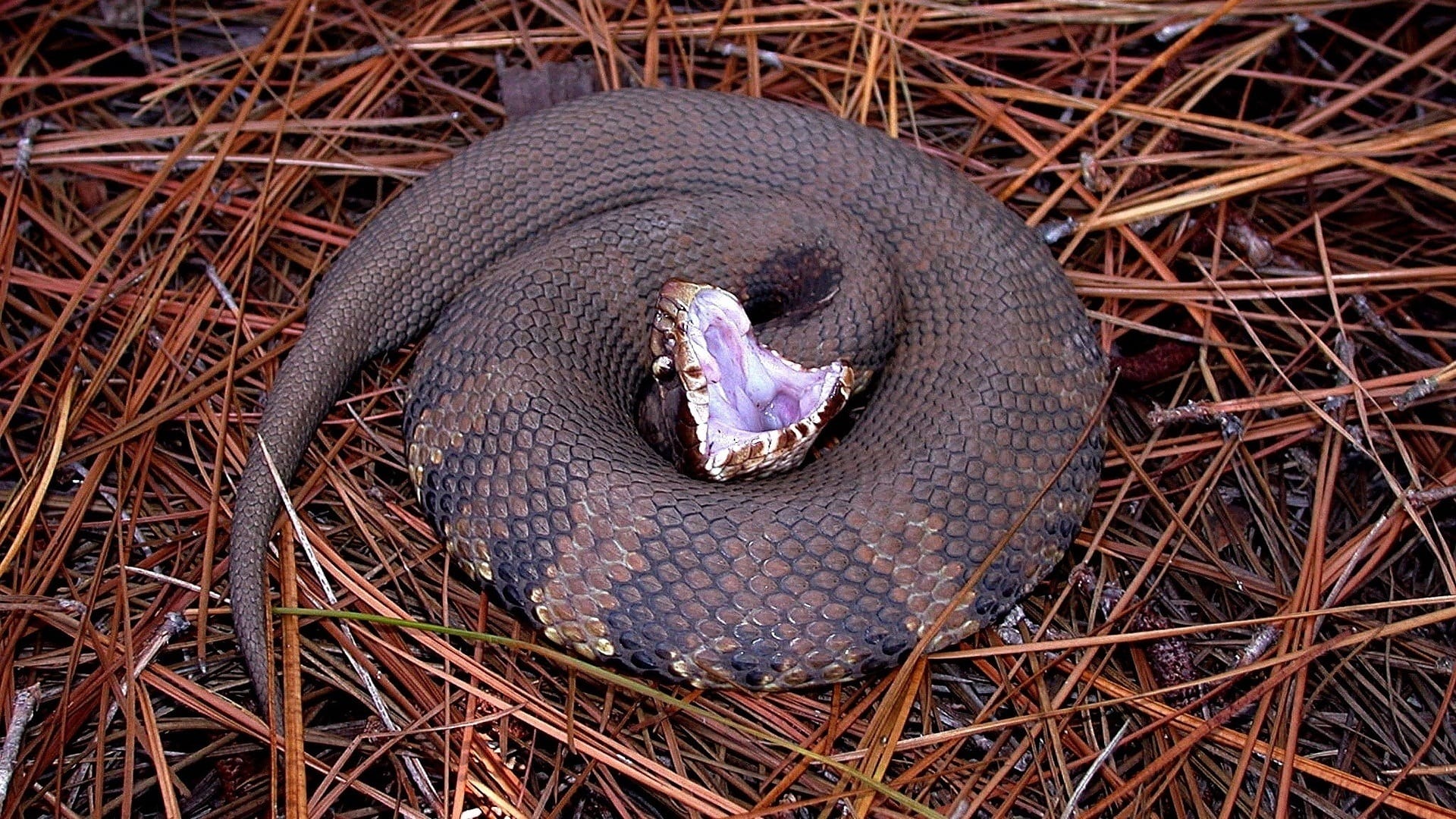Understanding the Bite of a Cottonmouth Snake
Cottonmouth snakes, primarily found in the southeastern United States, are known for their venomous bites. While encounters are relatively uncommon, it’s crucial to understand the potential dangers and know how to respond effectively.
What Happens When Bitten?
Cottonmouth venom is cytotoxic, meaning it attacks the body’s cells and tissues. Here’s what you might experience:
- Immediate Sensations: A sharp, burning pain at the bite site is typically the first sign, followed by rapid and significant swelling.
- Visible Signs: The affected area will likely bruise and become discolored as the venom spreads.
- Systemic Reactions: Nausea, vomiting, difficulty breathing, and an increased heart rate are possible as the venom enters the bloodstream.
These symptoms may vary depending on the amount of venom injected, the location of the bite, and an individual’s overall health.
Debunking Common Myths
There’s a lot of misinformation circulating about cottonmouths. Let’s set the record straight:
- Myth: Cottonmouths are aggressive and chase humans.
Reality: These snakes are generally not aggressive and prefer to avoid confrontation. Bites usually occur when they feel threatened or cornered. - Myth: All cottonmouth bites are fatal.
- Reality: While serious, fatalities are incredibly rare, especially with prompt and appropriate medical treatment.
First Aid & Seeking Medical Attention
If you suspect a cottonmouth bite, taking swift action is vital:
- Move to Safety: Distance yourself from the snake to prevent further bites.
- Stay Calm: Easier said than done, but panicking can increase heart rate and potentially spread the venom more rapidly.
- Immobilize: Keep the bitten limb as still as possible and, if you can, position it below heart level to help slow venom spread.
- Remove Constrictions: Take off any jewelry or tight clothing near the bite, as swelling will likely occur.
- Call for Help: Immediately call 911 or have someone drive you to the nearest emergency room.
What Not to Do:
- Do NOT attempt to suck out the venom. This is ineffective and can potentially introduce bacteria to the wound.
- Do NOT cut the wound or apply a tourniquet. This can worsen tissue damage.
- Do NOT apply ice directly to the bite.
Treatment & Recovery
Medical professionals will assess the severity of the bite and administer antivenom if necessary. This treatment is highly effective in neutralizing the venom’s effects.
Recovery time depends on various factors, including the amount of venom injected and the speed at which treatment was received. While most people make a full recovery, some may experience long-term effects such as muscle damage, impaired blood clotting, or psychological trauma.
Staying Safe in Cottonmouth Country
Prevention is always the best approach when it comes to snake bites. Here are some essential tips for staying safe:
- Be Aware of Your Surroundings: Cottonmouths are often found near water sources like swamps, marshes, and the edges of lakes and rivers. Exercise caution in these environments, especially when walking through tall grass or near submerged logs.
- Dress for Protection: If you’re venturing into areas where cottonmouths might be present, wear protective clothing, including boots and long pants.
- Keep Your Distance: Observe snakes from a safe distance and never attempt to handle them. Most snake bites occur when people try to interact with or kill a snake.
- Educate Yourself: Learn about cottonmouth behavior, their preferred habitats, and how to react if you encounter one. Knowledge is key to coexisting safely with these creatures.
Discover how a flitch beam has the remarkable ability to transform structural design.
Unravel the harmonious sounds of the cittern, a captivating string instrument that echoes through the ages.
- Mankato’s Population Growth: Exploring the Boom and Its Impact on Housing & Cost of Living - October 8, 2024
- Coeur d’Alene, Idaho Population Growth: Trends, Impact, and Future Outlook - October 8, 2024
- The Booming Population of New Braunfels, Texas: Understanding the Growth Explosion - October 8, 2024














